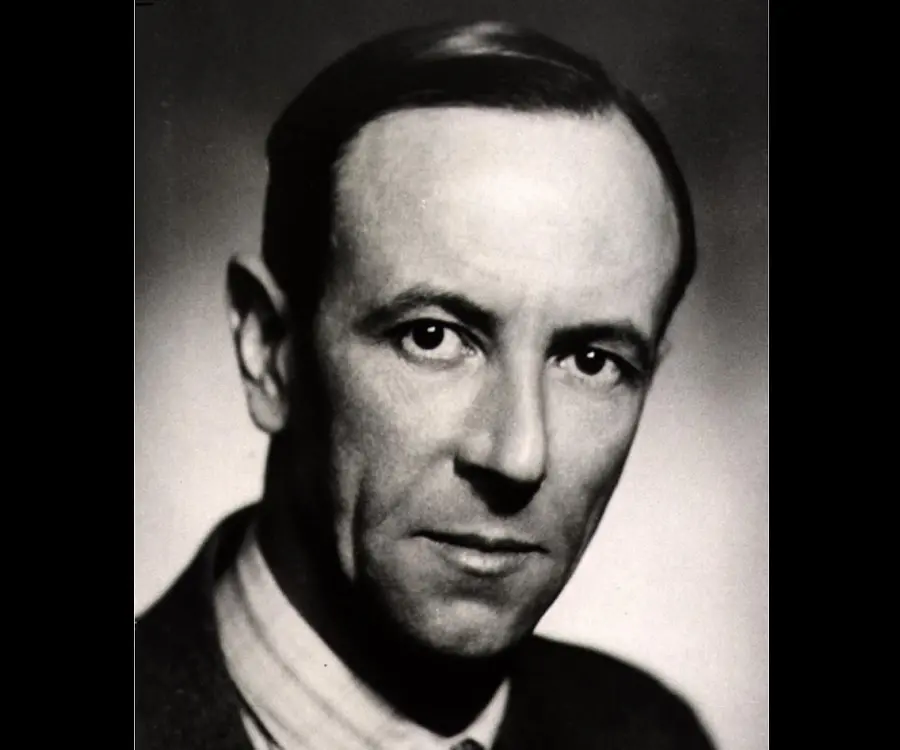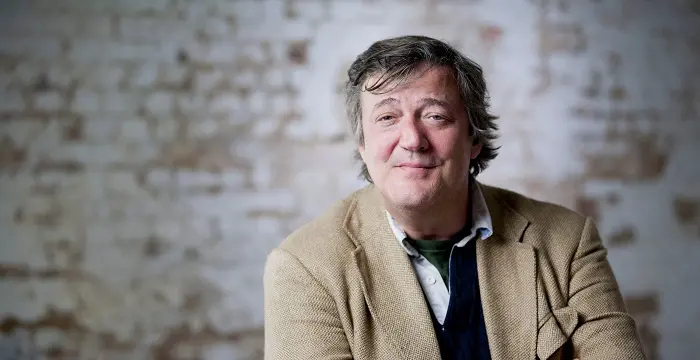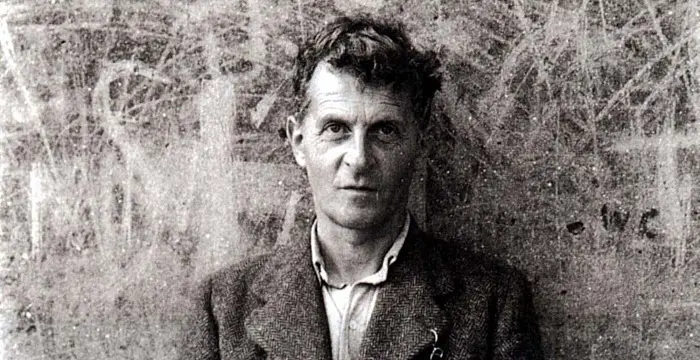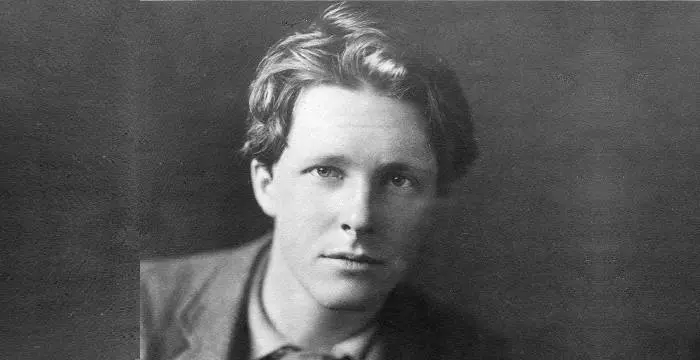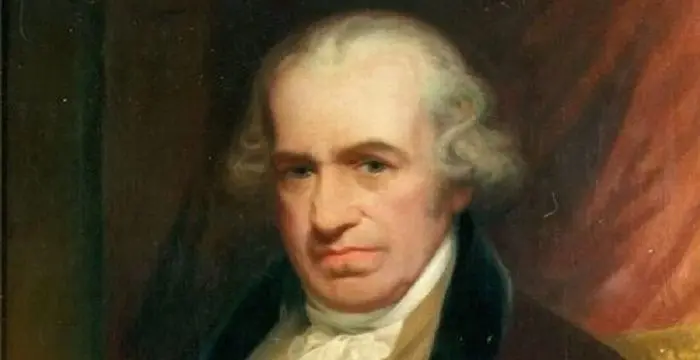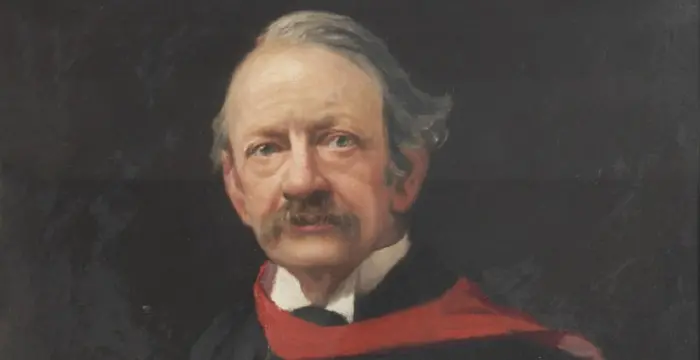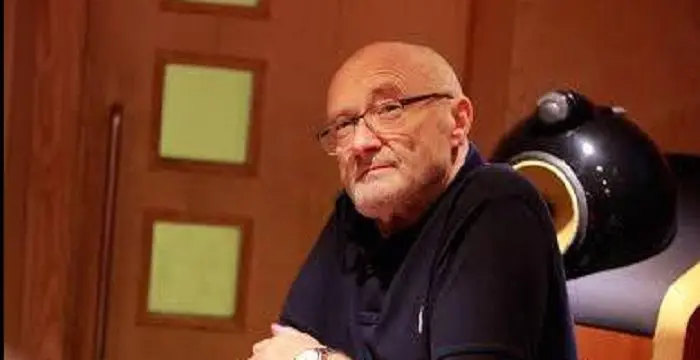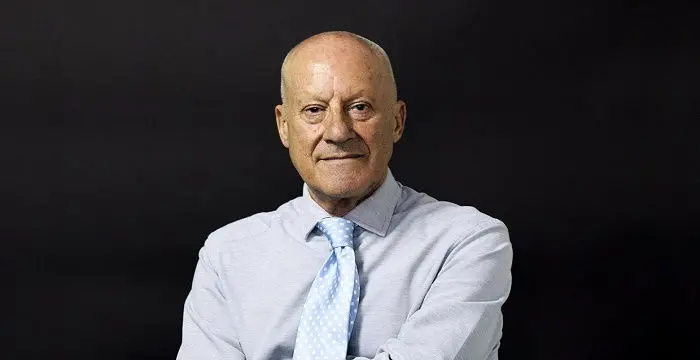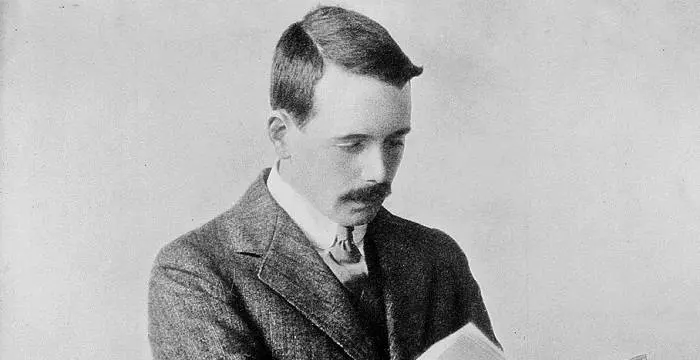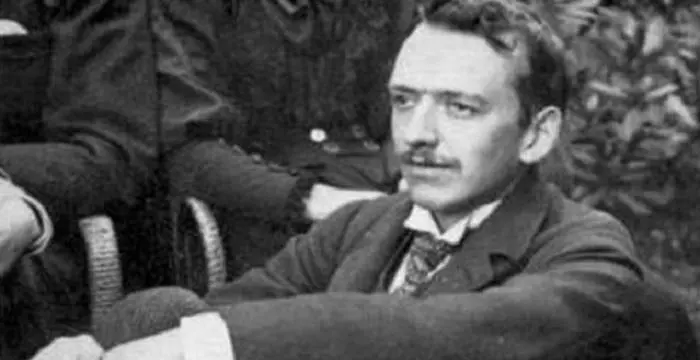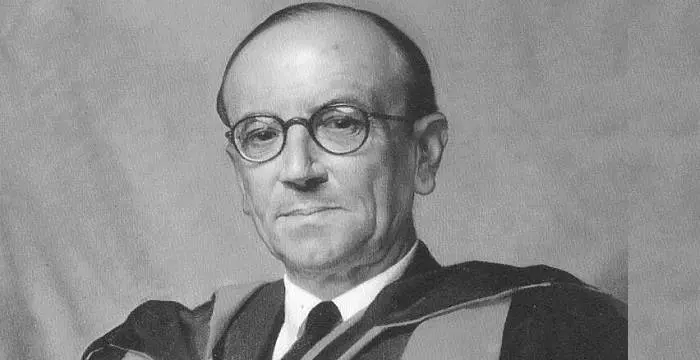
James Chadwick - Discoverer of Neutron, Career and Facts
James Chadwick's Personal Details
Sir James Chadwick CH was an English physicist, who won the 1935 Nobel Prize in Physics for his discovery of neutron
| Information | Detail |
|---|---|
| Birthday | October 20, 1891 |
| Died on | July 24, 1974 |
| Nationality | British |
| Famous | Cambridge University, University Of Manchester, Inventors & Discoverers, Physicists, Discoverer of Neutron |
| Known as | Sir James Chadwick |
| Universities |
|
| Notable Alumnis |
|
| Birth Place | Bollington |
| Gender | Male |
| Sun Sign | Libra |
| Born in | Bollington |
| Famous as | Discoverer of Neutron |
| Died at Age | 82 |
James Chadwick's photo
Who is James Chadwick?
Sir James Chadwick CH was an English physicist, who won the 1935 Nobel Prize in Physics for his discovery of neutron. Born in an economically backward family, he rose to become one of the most renowned scientists of Great Britain. While studying physics at the University of Manchester, he caught the attention of the head of the department, Professor Ernest Rutherford. When Rutherford became the Director of Research at Cavendish Laboratory, he invited Chadwick to join him. While working at the laboratory as Assistant Director, Chadwick discovered neutron, which led to the development of atomic bomb during the end of the Second World War. He later became the head of the British Mission at the Manhattan Project and was one of three men who had access to all the American research and production facilities for the atomic bomb. During his lifetime, he published a number of papers, which are now held at the Churchill Archives Centre in Cambridge. Apart from being a great physicist, he was also a great human being and was much distressed by the fact that his discovery had been used to kill many innocent people.
// Famous Cambridge University
Stephen Fry
Stephen Fry is a comedian, actor, author, television and radio presenter. Read the biography and know all about his childhood, career, profile and timeline.
Ludwig Wittgenstein
Ludwig Wittgenstein is a renowned philosopher. Read on to know about the life, career, and works of the famous Austrian philosopher Ludwig Wittgenstein.
Rupert Brooke
Rupert Brooke was an English poet who is widely known for his poem ‘The Soldier’, which was a part of five war sonnets. This biography of Rupert Brooke provides detailed information about his childhood, life, achievements, works & timeline
Childhood & Early Years
James Chadwick was born on 20 October 1891, in Bollington, Cheshire. His father, John Joseph, was a cotton spinner while his mother, Anne Mary Knowles, was a domestic servant. He had two younger brothers, Harry and Hubert, and a younger sister, who died in infancy.
In 1895, his parents moved to Manchester, leaving him in the care of his grandparents. He started his education at Bollington Cross Primary School. He was a brilliant student from the beginning and was offered a scholarship for Manchester Grammar School.
Unfortunately, James was still required to pay a percentage of the fees there, which his parents could not afford and so had to turn down the offer. Instead, he joined Manchester Central Boys’ High School, now known as Manchester Academy.
He joined University of Manchester in 1908 and mistakenly enrolled in physics; he wanted to study mathematics. Nonetheless, he did so well that by the end of the first year, he was awarded Heginbottom scholarship.
At that time, the physics department was headed by Professor Ernest Rutherford, who later came to be known as ‘Father of Nuclear Physics’. He was much impressed by young James Chadwick and assigned him the task of devising a means of comparing the amount of radioactive energy of two different sources, which he accomplished quite successfully.
In 1911, Chadwick passed out with first class honors degree. He then enrolled for his master’s degree at the same university. Throughout this period, he remained in close contact with Rutherford. In 1912, he and Rutherford co-authored a paper, in which the result of the above mentioned experiment was published.
In 1913, he received his Master of Science degree from Manchester University. In the same year, he also received the 1851 Exhibition Scholarship and went to Germany to study beta radiation in the Physikalisch Technische Reichsanstalt at Charlottenburg under Professor H. Geiger.
He was still in Germany when the First Word War broke out and he along with many other citizens from Allied countries was interned at Ruhleben internment camp. However, there he was allowed to set up a makeshift laboratory at a stable and carry on experiments with improvised materials.
He returned to England in 1918. He was offered a part time teaching position at Manchester. This allowed him to continue with his research. Later in 1919, he joined Rutherford at Cavendish Laboratory at the University of Cambridge,
In 1920, he was awarded Wollaston studentship. This allowed him to enroll as a Doctor of Philosophy (PhD) student at Gonville and Caius College, Cambridge. He earned his degree in 1921.
Career
In 1921, James Chadwick was elected as a Fellow of Gonville and Caius College and served in that capacity until 1935. Two years later in 1923, he was appointed as an Assistant Director of Research at Cavendish Laboratory where Rutherford was the Director. Again in 1927, he was elected a Fellow of the Royal Society.
In 1932, while still working at Cavendish Laboratory at Cambridge, he made an important discovery. He proved the existence of neutron, which could be used as a new tool of atomic disintegration and later paved the way for the creation of atomic bombs.
Chadwick remained at the University of Cambridge until 1935. In the same year in May he received an offer from the University of Liverpool. There he was elected to the Lyon Jones Chair of Physics and assumed the position on October 1, 1935.
He then set out improve the infrastructure at the university. As the total cost of the renovation was more than what was received as grant he paid the rest from his own pocket, using the money he had received as Nobel Prize that very year.
When the Second World War broke out in 1939, he was holidaying with his family in northern Sweden. He promptly came back to England using whatever means he could and promptly joined his duty.
In October 1939, he received a letter from the Secretary of the Department of Scientific and Industrial Research, in which his opinion on the feasibility of creating an atomic bomb was sought. He did not dismiss the idea, but sighted many difficulties that may arise.
In February 1940, Otto Frisch and Rudolf Peierls of University of Birmingham announced the possibility of fast fission in uranium-235. Very soon the Military Application of Uranium Detonation (MAUD) Committee was formed with Chadwick as one of the members.
A team of scientist led by Chadwick was next entrusted with the task of determining the nuclear cross section of uranium-235. The team submitted its reports by April 1941. In July 1941, Chadwick was asked to write the final draft of the Maud Committee report. It was finally presented to President Roosevelt in October 1941.
At the same time, it became clear that it will not be feasible for Britain to manufacture atomic bombs alone. Contrarily, the US government was ready to invest millions of dollar on it. They already had Manhattan Project running.
Although the USA did not need British cooperation they were nonetheless eager to use Chadwick’s talent. Accordingly, Quebec Agreement was signed and this resulted in cooperation between USA, Great Britain and Canada. James Chadwick became the head of the British Mission. He then moved to USA.
Chadwick remained in USA from 1943 to 1946. He was present at the meeting where it was decided that atomic bomb will be dropped on Japan and when the first atomic bomb was detonated at the Trinity Nuclear Test on July 16, 1945, he was also a witness to it.
He came back to England in 1946, mentally and physically exhausted. In 1948, Chadwick became the Master of Gonville and Caius College and served in that capacity till 1959.
from 1957 to 1962, Chadwick was inducted as a part time member in the United Kingdom Atomic Energy Authority.
Major Works
Discovery of neutron is Chadwick’s greatest work. It not only contributed to the better understanding of nucleus, but also paved the way towards the fission of Uranium 235, which ultimately led to the creation of the atomic bomb.
Through his researches Chadwick established that neutron is an elementary particle that does not contain electrical charge and therefore unlike helium, it does not need to overcome any electric barrier. It is therefore capable of penetrating as well as splitting the nuclei of even the heaviest atoms.
Awards & Achievements
In 1932, he was awarded the Hughes Medal by the Royal society for his discovery of neutron.
In 1935, James Chadwick was awarded the Nobel Prize in Physics for his discovery of neutron. He used part of his prize money to build a cyclotron at the University of Liverpool.
In 1945, Chadwick was awarded knighthood by King George VI of Great Britain for his war time efforts.
In 1950, he received Copley Medal and in 1951, the Franklin Medal of the Franklin Institute, Philadelphia.
In 1970, he was made a Member of Order of the Companions of Honour by Queen Elizabeth II of Great Britain.
In addition, Chadwick received honorary doctorate degrees from a number of universities such Reading, Dublin, Leeds, Oxford, Birmingham, Montreal (McGill), Liverpool, and Edinburgh.
He was an Honorary Fellow of the Institute of Physics and Honorary Member of the American Philosophical Society, the American Physical Society and many other internationally distinguished institutes.
Personal Life & Legacy
In August 1925, James Chadwick married Aileen Stewart-Brown, the daughter of a Liverpool stockbroker. The couple had twin daughters Joanna and Judith, born in 1927. Gardening and fishing were two of his favorite hobbies.
Chadwick passed away in sleep on 24 July 1974, at the age of 82, in Cambridge, England.
The Chadwick Laboratory at the University of Liverpool has been named after him. In 1991, Sir James Chadwick Chair of Experimental Physics was established as part of centenary celebration of his birth. He also has a crater on the moon in his name.
Trivia
Although both mathematics and physics were Chadwick’s favorite subjects, he actually wanted to study mathematics. While enrolling at Victoria University he was interviewed by a professor of physics, who, impressed by Chadwick’s depth of knowledge, assumed he wanted to study physics. Chadwick was too shy to say no and so enrolled as physics major.
// Famous Inventors & Discoverers
Nikola Tesla
Nikola Tesla was a Serbian-American inventor, best known for his development of alternating current electrical systems. This biography of Nikola Tesla provides detailed information about his childhood, life, achievements, works & timeline.
Thomas Newcomen
Thomas Newcomen was a British inventor who developed the world’s first steam engine. Browse through this biography to learn in details about his life, career, works and timeline.
Erno Rubik
The famous inventor and educationist, Erno Rubik is known world-wide for his invention the ‘Rubik’s Cube’. To know more about the childhood, profile, timeline and career of this famous architect-inventor read on.
James Chadwick's awards
| Year | Name | Award |
|---|---|---|
Other | ||
| 0 | Franklin Medal | |
| 1950 | Faraday Medal | |
| 0 | 1935 - Nobel Prize in Physics | |
| 0 | 1932 - Hughes Medal | |
| 0 | 1950 - Copley Medal | |
James Chadwick biography timelines
- // 1851 To 1913In 1913, he received his Master of Science degree from Manchester University. In the same year, he also received the 1851 Exhibition Scholarship and went to Germany to study beta radiation in the Physikalisch Technische Reichsanstalt at Charlottenburg under Professor H. Geiger.
- // 20th Oct 1891James Chadwick was born on 20 October 1891, in Bollington, Cheshire. His father, John Joseph, was a cotton spinner while his mother, Anne Mary Knowles, was a domestic servant. He had two younger brothers, Harry and Hubert, and a younger sister, who died in infancy.
- // 1895In 1895, his parents moved to Manchester, leaving him in the care of his grandparents. He started his education at Bollington Cross Primary School. He was a brilliant student from the beginning and was offered a scholarship for Manchester Grammar School.
- // 1908He joined University of Manchester in 1908 and mistakenly enrolled in physics; he wanted to study mathematics. Nonetheless, he did so well that by the end of the first year, he was awarded Heginbottom scholarship.
- // 1911 To 1912In 1911, Chadwick passed out with first class honors degree. He then enrolled for his master’s degree at the same university. Throughout this period, he remained in close contact with Rutherford. In 1912, he and Rutherford co-authored a paper, in which the result of the above mentioned experiment was published.
- // 1918 To 1919He returned to England in 1918. He was offered a part time teaching position at Manchester. This allowed him to continue with his research. Later in 1919, he joined Rutherford at Cavendish Laboratory at the University of Cambridge,
- // 1920 To 1921In 1920, he was awarded Wollaston studentship. This allowed him to enroll as a Doctor of Philosophy (PhD) student at Gonville and Caius College, Cambridge. He earned his degree in 1921.
- // Aug 1925 To 1927In August 1925, James Chadwick married Aileen Stewart-Brown, the daughter of a Liverpool stockbroker. The couple had twin daughters Joanna and Judith, born in 1927. Gardening and fishing were two of his favorite hobbies.
- // 1932In 1932, while still working at Cavendish Laboratory at Cambridge, he made an important discovery. He proved the existence of neutron, which could be used as a new tool of atomic disintegration and later paved the way for the creation of atomic bombs.
- // 1932In 1932, he was awarded the Hughes Medal by the Royal society for his discovery of neutron.
- // 1935In 1935, James Chadwick was awarded the Nobel Prize in Physics for his discovery of neutron. He used part of his prize money to build a cyclotron at the University of Liverpool.
- // 1st Oct 1935Chadwick remained at the University of Cambridge until 1935. In the same year in May he received an offer from the University of Liverpool. There he was elected to the Lyon Jones Chair of Physics and assumed the position on October 1, 1935.
- // 1939When the Second World War broke out in 1939, he was holidaying with his family in northern Sweden. He promptly came back to England using whatever means he could and promptly joined his duty.
- // Oct 1939In October 1939, he received a letter from the Secretary of the Department of Scientific and Industrial Research, in which his opinion on the feasibility of creating an atomic bomb was sought. He did not dismiss the idea, but sighted many difficulties that may arise.
- // Feb 1940In February 1940, Otto Frisch and Rudolf Peierls of University of Birmingham announced the possibility of fast fission in uranium-235. Very soon the Military Application of Uranium Detonation (MAUD) Committee was formed with Chadwick as one of the members.
- // 1945In 1945, Chadwick was awarded knighthood by King George VI of Great Britain for his war time efforts.
- // 1946He came back to England in 1946, mentally and physically exhausted. In 1948, Chadwick became the Master of Gonville and Caius College and served in that capacity till 1959.
- // 1950 To 1951In 1950, he received Copley Medal and in 1951, the Franklin Medal of the Franklin Institute, Philadelphia.
- // 1957 To 1962from 1957 to 1962, Chadwick was inducted as a part time member in the United Kingdom Atomic Energy Authority.
- // 1970In 1970, he was made a Member of Order of the Companions of Honour by Queen Elizabeth II of Great Britain.
- // 24th Jul 1974Chadwick passed away in sleep on 24 July 1974, at the age of 82, in Cambridge, England.
- // 1991The Chadwick Laboratory at the University of Liverpool has been named after him. In 1991, Sir James Chadwick Chair of Experimental Physics was established as part of centenary celebration of his birth. He also has a crater on the moon in his name.
// Famous University Of Manchester
J. J. Thomson
J.J. Thomson was an English physicist and mathematician. This biography profiles his childhood, life, academic career, research and timeline.
Milo Yiannopoulos
Milo Yiannopoulos is a British technology journalist. Let’s have a look at his family, personal life, career, achievements, controversies, and some facts.
Phil Collins
Phil Collins (Philip David Charles Collins) is an English musician, drummer, singer, and actor. This biography profiles his childhood, family, personal life, career, etc.
Norman Foster
Norman Robert Foster often referred to as the ‘hero of high-tech’ is one of the most distinguished British architects. This biography profiles his childhood, life, career, works, achievements and timeline.
Henry Moseley
Henry Moseley was a renowned English physicist who developed the Moseley’s Law in the field of x-ray spectroscopy. To know more about his childhood, career, profile and timeline read on.
Charles Thomson Rees Wilson
Charles Thomson Rees Wilson was a Scottish meteorologist and physicist. This biography of Charles Thomson Rees Wilson provides detailed information about his childhood, life, research, achievements and timeline.
James Chadwick's FAQ
What is James Chadwick birthday?
James Chadwick was born at 1891-10-20
When was James Chadwick died?
James Chadwick was died at 1974-07-24
Where was James Chadwick died?
James Chadwick was died in Cambridge
Which age was James Chadwick died?
James Chadwick was died at age 82
Where is James Chadwick's birth place?
James Chadwick was born in Bollington
What is James Chadwick nationalities?
James Chadwick's nationalities is British
What was James Chadwick universities?
James Chadwick studied at Cambridge University,University Of Manchester, Gonville and Caius College, Cambridge, University of Cambridge, University of Manchester
What was James Chadwick notable alumnis?
James Chadwick's notable alumnis is Cambridge University, University Of Manchester
What is James Chadwick's sun sign?
James Chadwick is Libra
How famous is James Chadwick?
James Chadwick is famouse as Discoverer of Neutron

